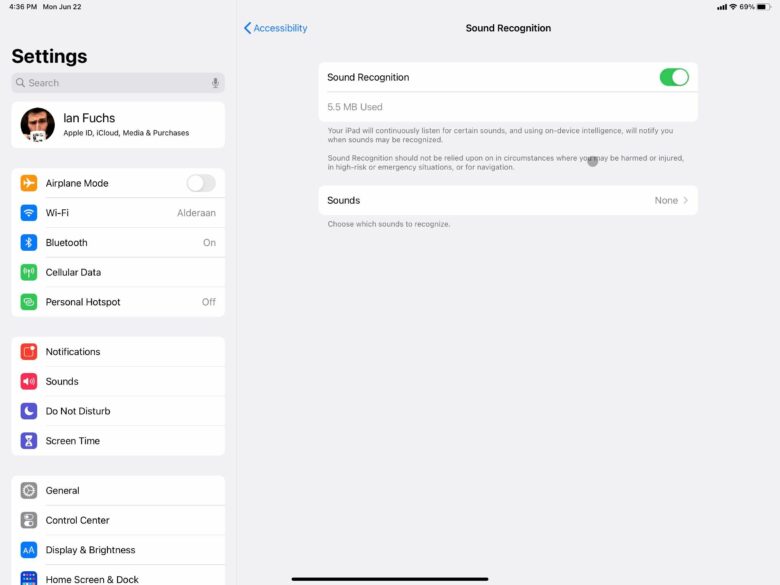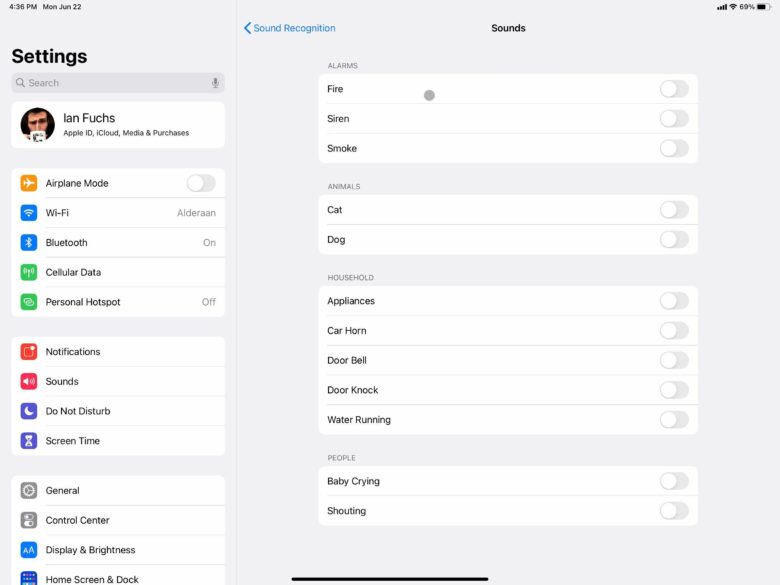iOS 14 and iPadOS 14 has an impressive accessibility feature that can listen out for sounds like running water, a person knocking on the door, smoke alarms, babies crying, and more — and then warn users about it with an on-screen notification.
It’s an incredibly smart feature, based on machine learning technology, that could range from useful to life-saving. Who says that always-listening tech has to be limited to “Hey, Siri”?

Photo: Ian Fuchs/Cult of Mac
The feature appears in the Settings section of iOS 14 and iPad OS 14 under Sound Recognition. The full list of sounds it can monitor for include fire and smoke alarms, emergency sirens, cats and dogs, household appliances, car horns, door bells, door knocking, water running, babies crying, and shouting. Since not all of these will necessarily apply to every home, they can be toggled on and off individually. You can also toggle on off the Sound Recognition tech as a whole.
In the Settings menu, Apple notes that the feature uses on-device AI technology. This means that, while it will listen out to the sounds around you home, none of these sounds will leave your device. This is in keeping with Apple’s pro-privacy stance, which it pushed hard at yesterday’s WWDC event.

Photo: Ian Fuchs/Cult of Mac
Sound Recognition is just the latest Apple accessibility feature
Accessibility has long been a core part of what Apple does. The company has a dedicated section of its online store where shoppers can find a range of accessibility devices. Over the years, Apple has created a range of accessibility tools and features, such as its award-winning VoiceOver feature.
Early in his tenure as Apple CEO, Tim Cook talked about his approach to accessibility tech during a speech at Auburn University. Cook said that, “People with disabilities often find themselves in a struggle to have their human dignity acknowledged. They frequently are left in the shadows of technological advancements that are a source of empowerment and attainment for others. But Apple’s engineers push back against this unacceptable reality. They go to extraordinary lengths to make our products accessible to people with various disabilities from blindness and deafness to various muscular disorders.”
It’s great to see that same spirit galvanizing the work Apple has done on iOS 14 and iPadOS 14. Sound Recognition is unlikely to be used by the majority of users (although it does sound pretty darn useful). But it could be a game-changer for those who most need it. Great work, Apple!


